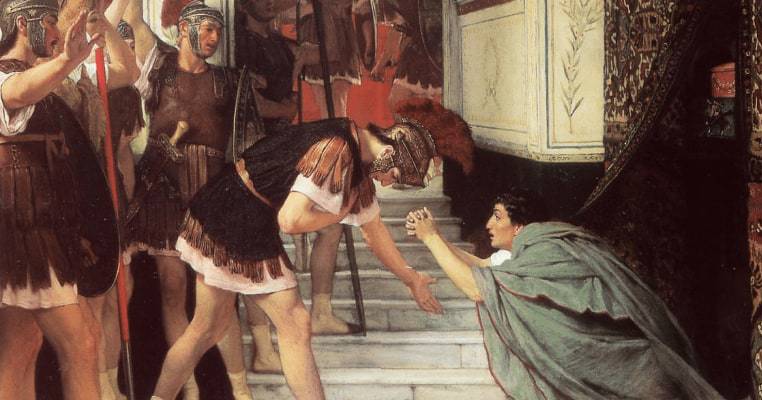The term “kingmaker” was first applied during the Wars of the Roses to Richard Neville, 16th Earl of Warwick, who was nicknamed “Warwick the Kingmaker” for his machinations in crowning and deposing monarchs. The term has since come to be used in describing individuals or groups who play a huge role in royal or political successions, in which they are not candidates themselves.
Following are ten of history’s greatest kingmakers.
The Praetorian Guard Deposed and Proclaimed Emperors, and Auctioned the Imperial Throne
In the 1st century BC, Augustus did away with the increasingly dysfunctional and unworkable Roman Republic, replacing it with the Roman Empire, with himself at its head. To protect himself, Augustus created a special military unit that came to be known as the Praetorian Guard. Over the next three centuries, its members would act as the emperor’s bodyguards, a secret police, and imperial enforcers and executioners.
Augustus reorganized the Roman army to permanently station the legions on the empire’s frontiers, leaving the Praetorians as the only organized military force in Rome and Italy. Augustus kept the Praetorians in check, but after his death in 14 AD, the rot set in, as the guards came to realize the advantages of their swords’ proximity to the emperor’s throat.
In 41 AD, a Praetorian tribune had enough of repeated insults from the emperor Caligula, and had him hacked to pieces. The Senate declared a restoration of the Republic, but the Praetorians had other ideas: while pillaging the imperial palace, they came upon Caligula’s uncle, Claudius, hiding behind a curtain. Claudius, an unprepossessing figure with a limp and stutter, had only survived the previous emperors’ paranoid slaughter of their relatives because he was deemed feebleminded. On the spur of the moment, the Praetorians dragged the terrified Claudius from his hiding place, and as he begged for mercy, proclaimed him emperor. A relieved Claudius rewarded them with a bonus equivalent to 5 years’ salary, setting a precedent that all new emperors were expected to follow – or else.

In the Year of the Four Emperors, 69 AD, the Praetorians were persuaded to abandon the emperor Nero after a supporter of Galba, a rebellious general, offered a bribe of 7500 denarius per man. Galba replaced Nero on the throne, but when told of his supporter’s promise, he balked, quipping “It is my habit to recruit soldiers, not bribe them“. The Praetorians threw their support to his rival, Otho, and murdered Galba.
Otho was defeated by yet another contender, Vitellius, who cashiered the Praetorians after executing their centurions. So the ex Praetorians joined Vespasian, another contender, defeated Vitellius, and established the Flavian Dynasty. The cashiered Praetorians got their jobs back. Over the next century, aside from involvement in a plot that murdered the emperor Domitian in 96 AD, the Praetorians behaved themselves.
They relapsed in 192, and assassinated the emperor Commodus. His successor, Pertinax, gave the Praetorians a bonus of 3000 denarii, each, but it did not stop them from murdering him three months later. The Praetorians then committed their most brazen act of kingmaking, by auctioning off the imperial throne to the highest bidder. That was just too much: the army of the Danube proclaimed Septimius Severus emperor. He marched on Rome, seized the city, and fired all the Praetorians, replacing them with men from his own legions.
The new Praetorians were just as bad as the old, however, and in 217 they assassinated Septimius Severus’ son and successor, Caracalla. They followed that up in 222 by murdering the emperor Elagabalus and his mother, tossing their bodies into the Tiber river afterwards. In his place, the Praetorians appointed Elagabalus’ cousin, Severus Alexander.
Little is known about the Praetorians during a chaotic period that came to be known as The Crisis of The Third Century (235 – 284), which saw at least 26 emperors and imperial claimants during a 50 year stretch. The Praetorians murdered at least one emperor during the period: Phillippus II. The Praetorians were finally disbanded in 312 by the emperor Constantine, after they backed his opponent Maxentius and lost.

